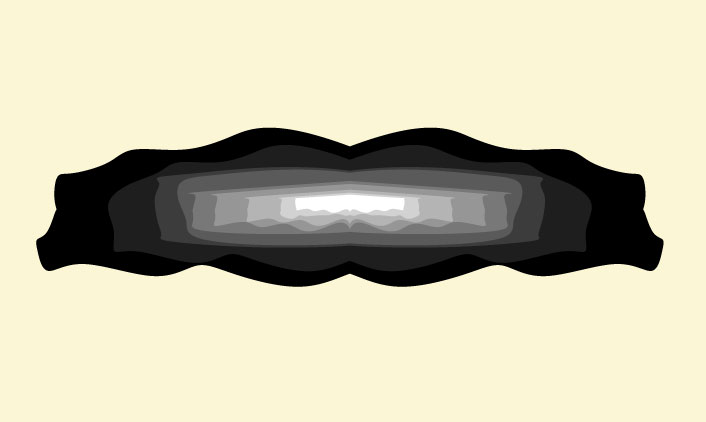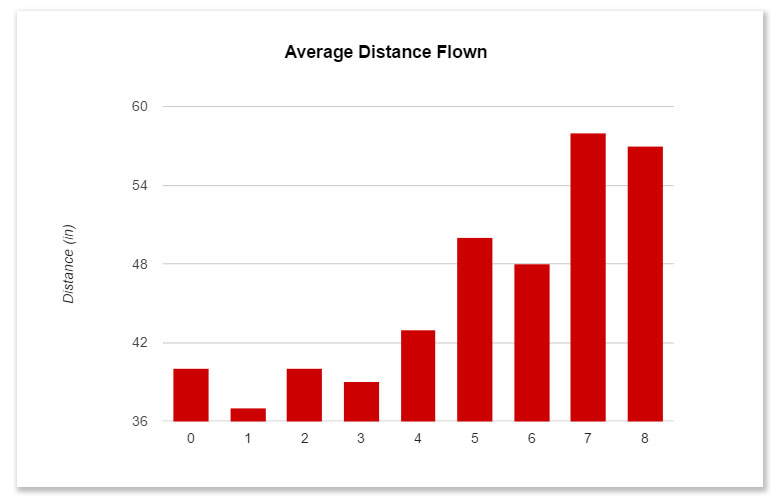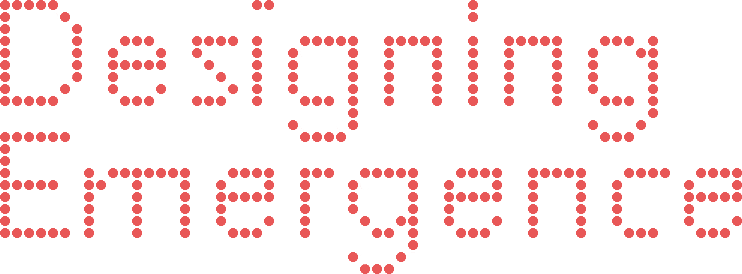Evolution of Flight: Testing 2

In the past week, I tested and evolved nine generations of airplanes. The testing process was straightforward and it took me approximately an hour to create a new generation of planes and test them. Below are the results of each generation of planes.
As you can see, the average distance the planes flew increased overall but not in a linear fashion. Rather, the average was pretty constant for a few generations and then suddenly jumped up. The following graph shows the overall trend of how the average flight distance progressed for the nine generations.

Here is another graph showing the minimum and maximum flight distance as well as the minimum and maximum averages for each generation. Interestingly, although the maximum flight distance increased the minimum flight distance also got lower. This is probably due to the fact that I began to pick a few quirky designs to diversify the gene pool as the designs began converging.
The jump in averages starting from generation 4 can be explained by a change in my method of selecting airplanes for testing. For generations 0-3, I was selecting airplanes based on what I thought would fly well and would increase genetic diversity. For generation 4, I decided to look at the previous flights and assess what characteristics were successful and which ones were not. Here are some things I noticed that increased flight distance.
- Planes with medium sized fuselages flew more consistently
- Planes with wings towards the rear had a more consistent flight
- Wings that had serrated back edges tended to fly straight
- Wider wings were actually less successful since those planes never picked up enough velocity and glided down gently
- Planes with small bodies and large wings spun forward, but didn’t have the same flying potential of a ‘standard’ flight
Combining the analytical approach with the gut feeling approach was quite effective. I was able to see patterns and choose planes that would’ve otherwise taken a long time to surface using traditional evolutionary methods. My goal of speeding up the evolutionary process seems to have worked, at least based on initial observations. I want to continue testing airplanes and see if I can get them to consistently fly 10 feet. I also want to apply the same process to less objective measures, such as visual aesthetics or musical harmony to see how well it works. So far, Evolution of Flight has shown both how using an evolutionary method to design can lead to unexpected successes and also the positive role humans can play in speeding up the evolutionary process.
As always, if you have any thoughts or ideas, please feel free to comment below











Leave a Reply